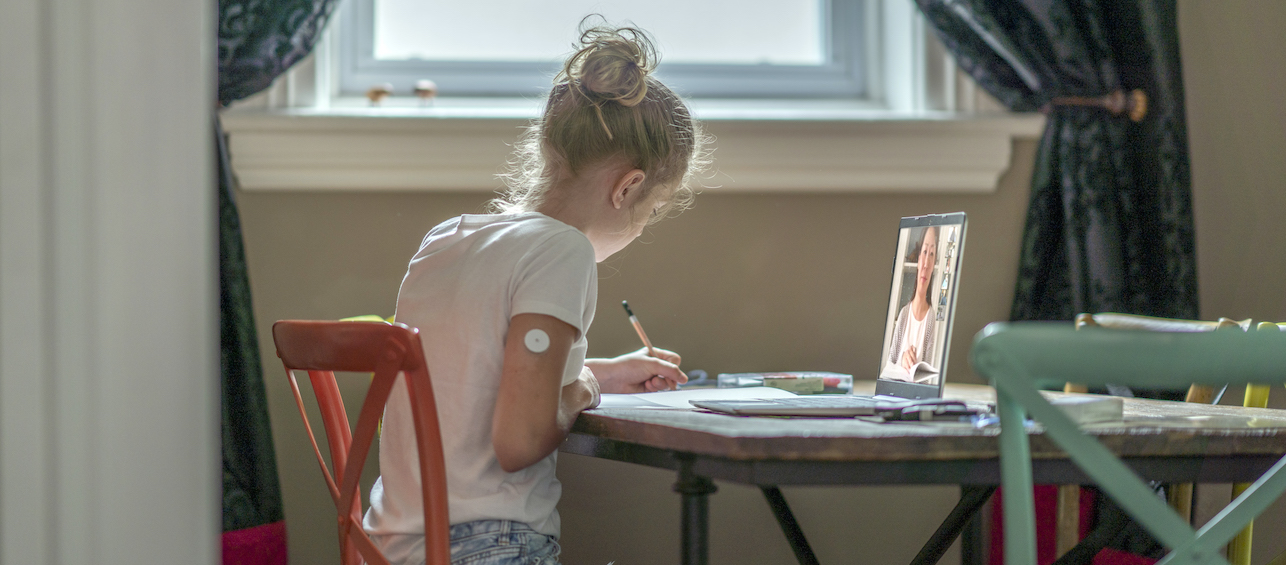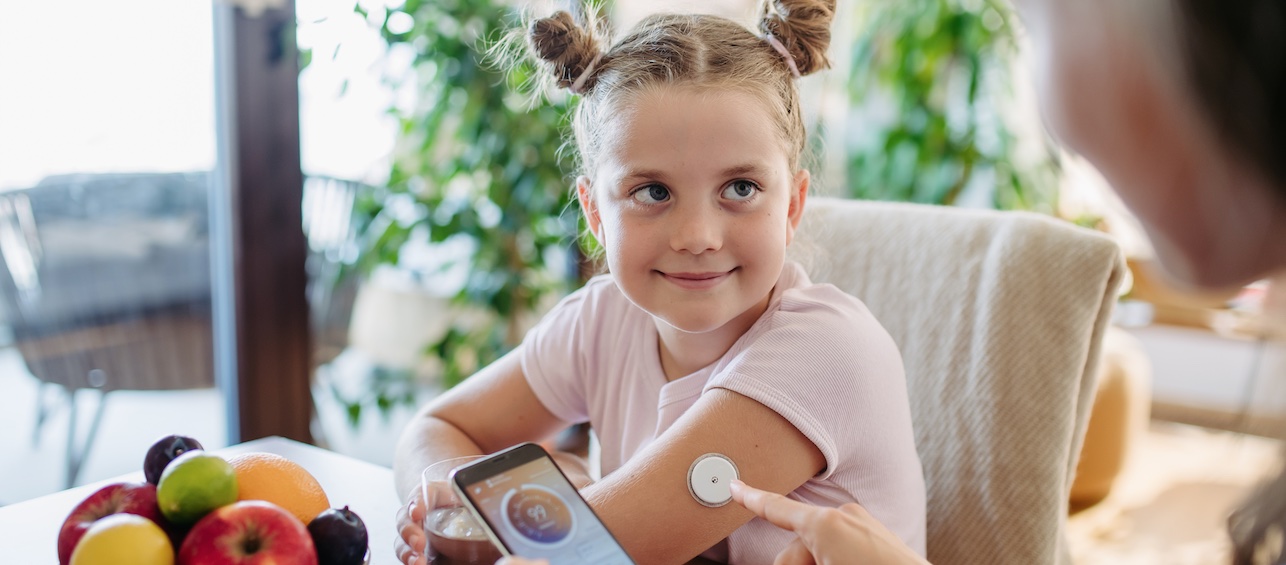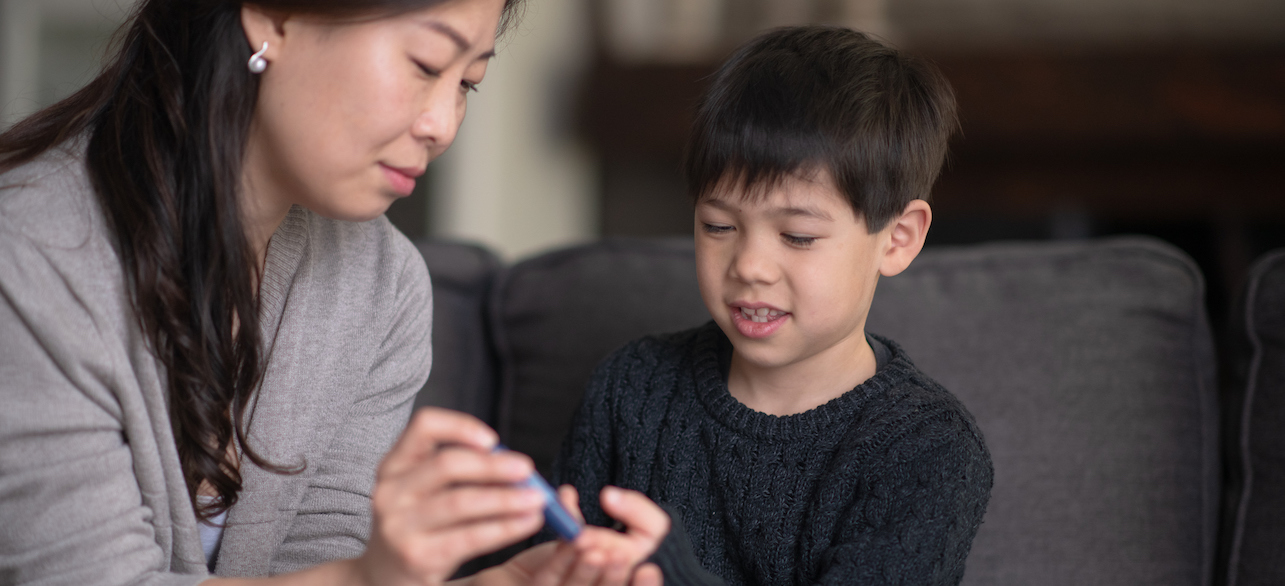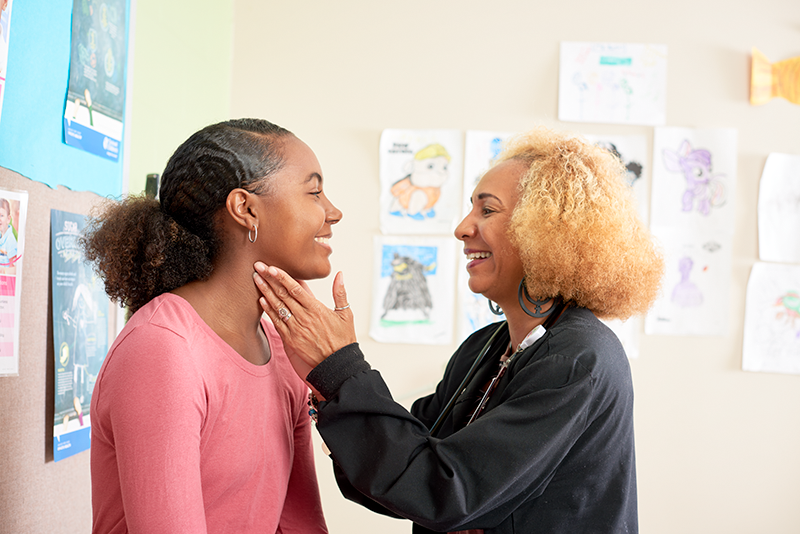It’s never a great time to have diabetes, but now is a very exciting time to be living with this condition. That’s because the pace of change in the technology available for managing diabetes is fast and getting faster.
Technology is a game-changer for people with diabetes. I should know. I was diagnosed with Type 1 diabetes (T1D) in 1990 when I was a child. Thirty years ago, I was doing finger sticks to check my glucose levels 6 to 8 times a day, every day.
Now, continuous glucose monitors (CGMs) measure glucose levels every few minutes—with no finger sticks—and send the results instantly to a CGM device or your phone. A CGM is a small filament inserted under your skin that measures the glucose in your body every couple of minutes and sends the data to a receiver in real time. They can be self-inserted at home and need to be changed every 7 to 14 days depending on the type.
Evolutions of this technology mean that CGMs keep getting better: Each new model that’s released offers an improvement such as providing more accurate or more frequent readings, being easier to use, or being smaller and less noticeable.
CGMs on the Market Now
The first CGM available for use in kids came out in 2014. Today, less than 10 years later, we have multiple CGMs to choose from and they’ve each gone through several iterations already. Those now available include the following:
Dexcom G7
This model was just released in February. Two times smaller than the G6, it’s about the size of two nickels stacked on top of one another. The transmitter that transmits blood sugar data is embedded in it. It offers a 10-day wear and provides a 12-hour grace period before it’s about to expire. It also features a 30-minute warm-up period, so you can get back into your closed loop system faster.
(Note that at this time closed loop systems have not updated their software yet. If you are on a closed loop system, talk to your doctor before upgrading.)
FreeStyle Libre 3
This version came out in October 2022. Originally with the Libre, you had to scan using your phone to get blood sugar readings. With the upgrade to Libre 3, you no longer have to scan; it sends minute-to-minute blood sugar readings straight to a smart phone. This version also has optional alarms and a 14-day wear. The Libre 3 is not yet connected to any closed loop systems. But a lot of kids don’t want an insulin pump, so this works well for them.
Medtronic Guardian 3
This CGM requires calibrating every 12 hours. It works with Medtronic closed loop systems and offers a wear of 6 to 7 days. Version 4 of the Guardian is out in Europe now; it is currently under review by the FDA for U.S. approval. The new model will not require finger stick blood sugars for calibrations.
With the various options available through these CGMs, families can weigh what features will work best for their child. We have more choices than ever before.
The Impact of CGMs on Kids’ Lives
When kids, teens and young adults use a CGM, it provides them and you valuable information about how their blood sugar reacts to insulin, food, exercise and anything else that affects it. What that means for kids is more independence and improved glucose control.
The newest advances in CGMs have resulted in remote insulin dosing, automated sensor replacement reminders, integration with cell phones and smart watches, and more. From a child’s standpoint, those things are huge.
Here’s what it can mean for them:
“I can have a sleepover at a friend’s house.”
With certain devices, kids and teens can share their data with parents and caregivers remotely. That means you don’t have to be right there next to them counting their carbs and making sure their glucose levels are in the right range. For many kids with diabetes, that can mean that sleepovers—once off limits—are now a possibility.
“I can go away to college.”
I had one patient with diabetes who didn’t feel comfortable going away for college. The constant management of her condition seemed too much to manage on her own away from her support system. But the latest advancements in technology mean she can more easily self-manage her condition, and her parents can help her remotely thanks to today’s data sharing capabilities. In the end, she and her family changed their minds about her needing to stay close to home for college.
We have fewer lows at diabetes camp.
I work at our region’s diabetes camp each year. Camp staff is responsible for monitoring blood sugar levels while kids sleep. Thanks to all of these advances in technology, we don’t have to wake kids up as often for finger stick blood sugars. And we now have fewer low blood sugar levels overnight than ever before. This provides a safer and more enjoyable time for the kids.
While I wish there were a cure for diabetes today, in the absence of that, I’m thrilled that we have so many tools to help us manage this condition—both for my sake and the sake of my patients. I’m excited about the technologies that have been developed so far and for what’s to come in the years ahead. I encourage anyone with diabetes to reach out to their doctor about these options to find one that’s right for you.







Thanks very much for this information. So happy to hear the advances being made in Diabetes care.
Wafa J. Nasser M. D.